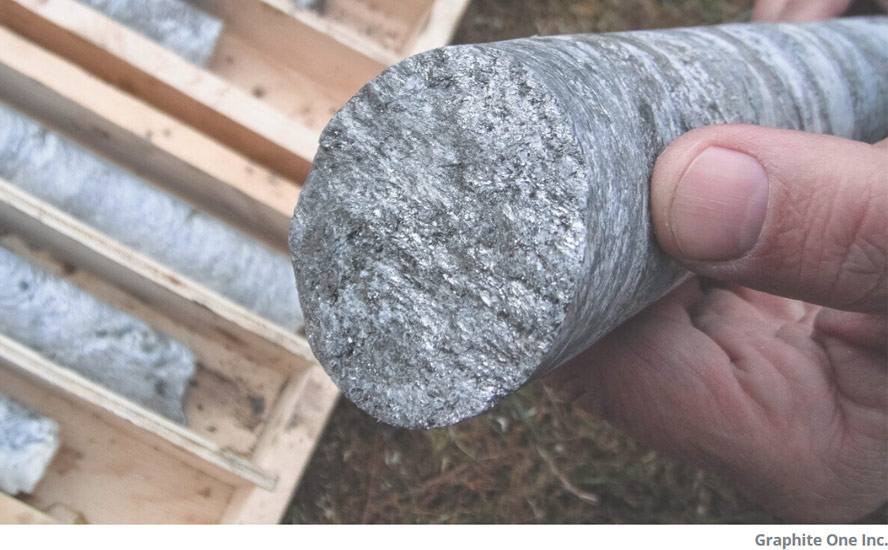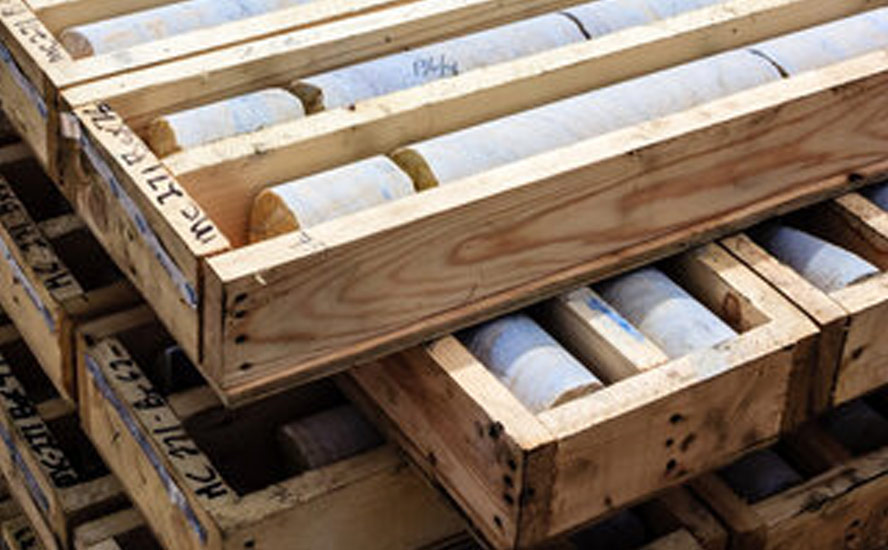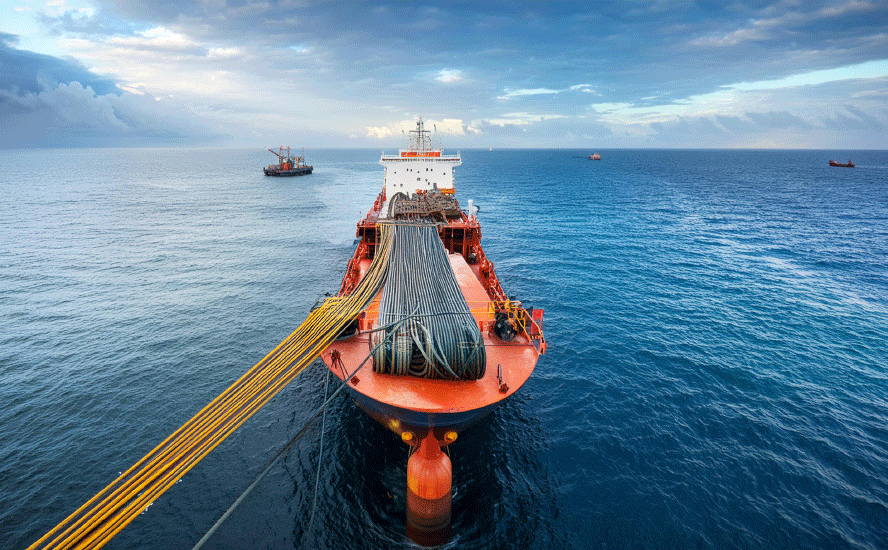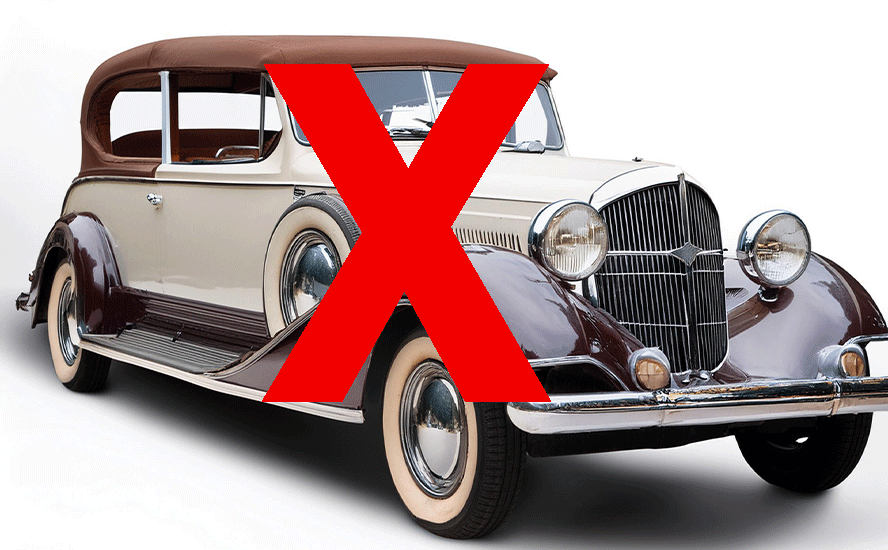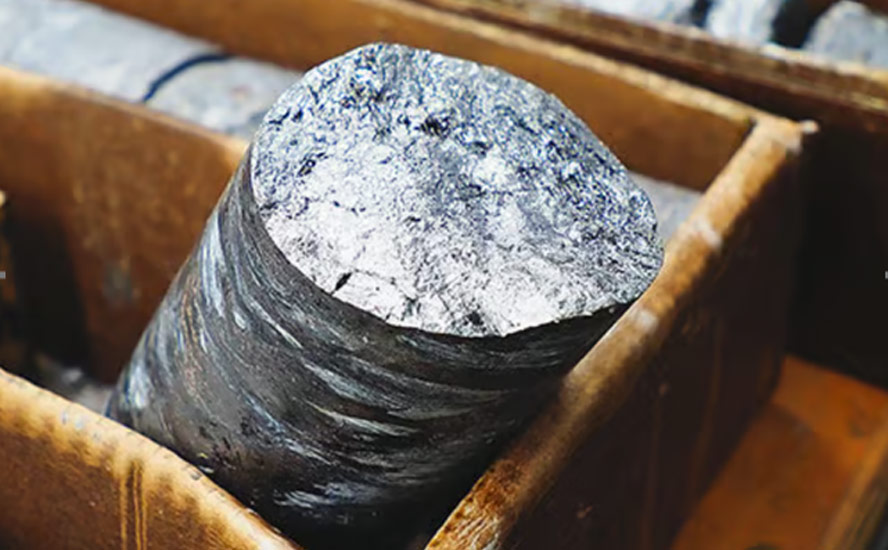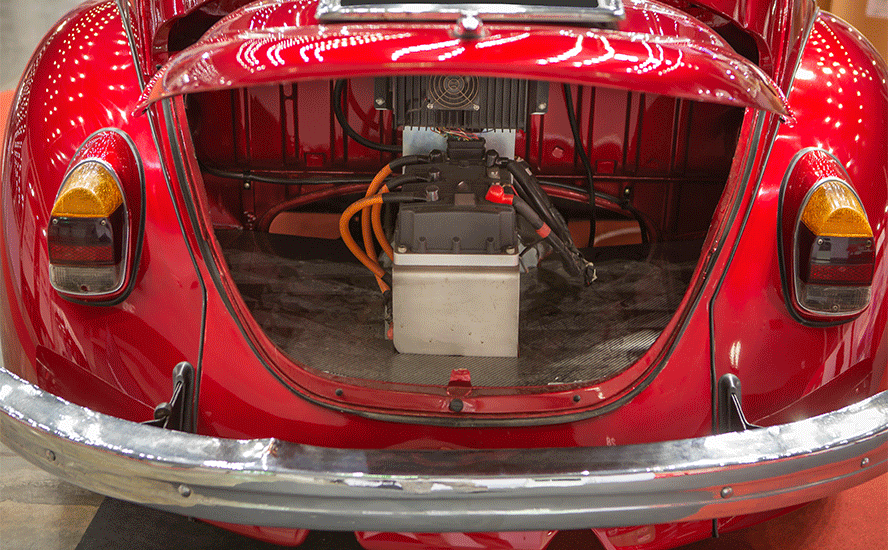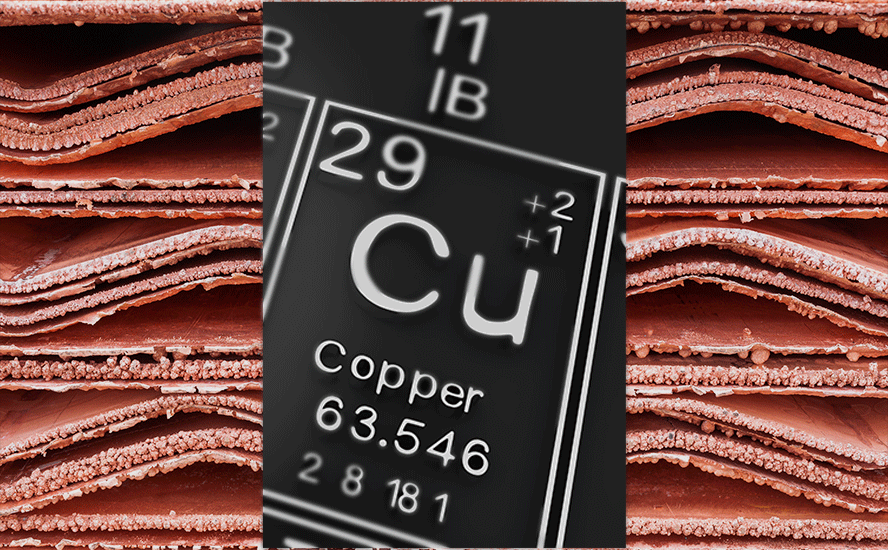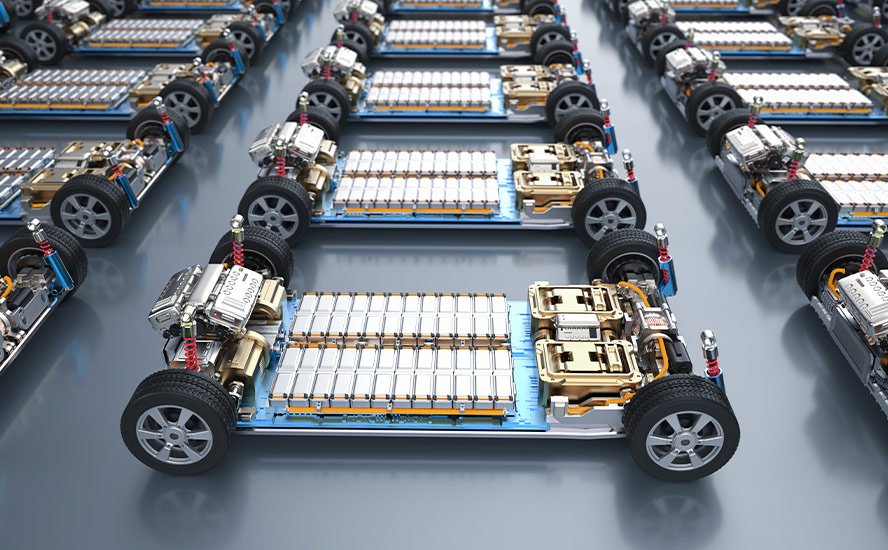Max Resource granted additional mining concession contracts in Colombia, the most of any in the country
2022.02.02
Having made significant progress over the past year at its flagship CESAR copper-silver property in Colombia, Max Resource Corp. (TSXV: MXR) (OTC: MXROF) (Frankfurt: M1D2) is looking to build even more momentum in 2022, with its first update of the year featuring a significant milestone.
New Mining Concession Contracts
On January 12, Max announced that it has been granted 15 additional mining concession contracts for its project in northeastern Colombia, representing a continuation of last year’s exploration success.
The company now has access to a total of 19 mining concessions covering 186 km², representing the largest area for copper in the prolific CESAR basin region. These concessions are all located along the CESAR North 90 km copper-silver belt, extending for at least 45 km.

CEO Brett Matich said in a news release that the 19 mining concession contracts are more than any other company received in Colombia for 2021. Additional concessions are pending to add to this total.
For Max, this significant milestone forges the way for drill permitting at both the URU and ANM drill targets this year; URU is a new discovery that spans 48 km² over a major structural corridor and remains open in all directions, while ANM is a 2020 discovery zone spanning 29 km², with highlight grade values of 34.4% copper and 230 g/t silver.
“URU is to be the first significant drilling event on this previously unrecognized copper-silver belt, since the discovery of Cerrejón, the largest coal mine in South America and the reasons for much of the critical infrastructure in the CESAR basin,” Matich commented on the company’s upcoming drilling.
“Located arguably in Colombia’s most prolific mining district, Max’s 2022 exploration and drilling programs are focused on unlocking the true district-scale potential of its CESAR copper-silver project,” he added.
To assist the drill design and exploration at URU, the company is conducting a 290 km² LiDAR survey over the five drill target zones spread along 15 km of strike. The goal is to determine high-probability drill targets within the URU zone and maximize the success of what would be the first drill campaign targeting copper-silver deposits in the CESAR basin.
About CESAR Property
Max’s CESAR property is situated along the famous Andean Belt, the world’s leading copper-producing belt, within a region that enjoys major infrastructure from existing mining operations (see map below).

The entire project area lies on a massive sedimentary system covering a significant portion of the 200 km long Cesar Basin, a massive geological feature that extends for over 1,000 km from the northern tip of Colombia southwards through Ecuador and Peru.
The basin was a seabed trapped behind the uplifting Cordillera mountain ranges, and the model suggests that rich copper and silver-bearing fluids flooded up into the basin and deposited as they encountered organic matter on the seafloor.
As such, CESAR represents a type of sediment-hosted copper mineralization that is typically flat-lying, near surface, and known to be extensive in only certain parts of the world, namely Africa, Poland and Colombia.
The Max exploration team interprets the sediment-hosted stratabound mineralization of the Cesar Basin to be analogous to both the Central African Copper Belt (CABC) and the Polish Kupferschiefer in terms of grade, scale and mineralogy.
Almost half of the copper known to exist in sediment-hosted deposits is contained in the CACB, including Ivanhoe Mines Ltd.’s 95-billion-pound Kamoa-Kakula copper deposits in the Congo.
Poland’s Kupferschiefer deposits are considered to be the world’s biggest silver producer and Europe’s largest copper source, mining an orebody that is 0.5 to 5.5 meter thick at depths of 500 meters. In fact, Kupferschiefer’s silver yield is almost twice the production of the second-largest silver mine.
In 2018, the Kupferschiefer deposits produced a total of 3 million tonnes of copper and 40 million ounces of silver the year after, at grades of 1.49% Cu and 48.6 g/t Ag.
In comparison, the CESAR target in Colombia has comparable grades of 1.0% Cu and 20 g/t Ag over a similar horizon, but the orebody starts at surface rather than 500m below surface like Kupferschiefer, giving it a bigger advantage.
Therefore, Max believes CESAR has the makings of a district-scale copper-silver system comparable to the world’s best. Much of the areas covered by the Cesar Basin in northeastern Colombia remain underexplored to this day.
URU Discovery Zone
For the last two years, Max has not only been discovering high-grade copper zones on its flagship CESAR property but expanding these areas, confirming the potential existence of a massive sediment-hosted system.
The URU copper zone represents one of five major discoveries on the property to date. It lies along the southern portion of the 60 km long CESAR North target area, about 30 km to the south of CONEJO, another new discovery from 2021.
Since its discovery last April, the URU zone has been expanded multiple times, now spanning 48 km² over a major structural corridor — representing a 300% increase in strike length since its initial discovery — and remains open in all directions. Sampling from URU has also indicated what appears to be a mineralized system of significant size.
Eighteen rock samples collected over widths ranging from 1.0 to 10.0m returned values in excess of 2.0% Cu. Thirty-two returned values greater than 1.0% Cu, with highlight values of 14.8 % Cu and 132 g/t silver.
According to Max, the URU discovery potentially represents a zone of major proportions when compared to the world-class Kupferschiefer and Central African Copper Belt deposits.
This large-scale potential was confirmed in December when as many as five drill target zones over 15 km of strike, with widths of 10 to 25 meters over 500 vertical meters, were identified by the Max team.

Assays from one of the target zones, Drill Target 3 (DT-3), were released at the time, with highlight values ranging from 5.9% to 14.8% Cu and 19 g/t to 132 g/t Ag; these results extended the DT-3 high-grade zone to over 2.6 km in length.
Assays from the remaining four zones, which are still pending, could expand the strike length of drilling targets even further.
On Feb. 1, Max said field crews have identified a second drill target area located 2 km south of the previously identified target area. The new area is at the southern end of the above-mentioned 15 km-long strike, where sampling has identified strong copper mineralization.
Of 45 channel and composite samples released, 38 of 45 were over intervals of 10-25 meters, and all returned copper values of 1% Cu, spread over a 4 km² area. Highlight values of 4.34% copper and 37 g/t silver were encountered, Max said.

As detailed earlier, the URU discovery zone will be the focus of Max’s 2022 exploration plans, headlined by the company’s first drilling campaign in Colombia, and the area’s first significant drilling event in decades.
In the Feb. 1 update, Max said in addition to preparing for drilling, the company is:
- Undertaking a 290-square-kilometer LiDAR survey;
- Conducting field work to assist in drill design;
- Carrying out an environmental baseline survey;
- Prioritizing drill targets;
- Delineating drill pads, and
- Permitting
Copper Supply “Crisis”
The discoveries made on Max’s CESAR property come at a time when the copper industry is threatened by a looming global supply crisis, as the world needs more of the metal to accelerate its transition towards cleaner energy sources.
Green-related demand will gather pace in the second half of this decade, ultimately generating nearly 5 million tonnes of additional demand, Goldman Sachs recently said.
BloombergNEF estimates that in 20 years, copper miners will need to double the amount of global production – from the current 20 million tonnes annually to 40 million tonnes – just to meet the demand for a 30% penetration rate of electric vehicles.
This is a tough ask considering some of the world’s largest mines are seeing depleted copper reserves and lower ore grades, so it would be difficult for global production to even maintain a 20mpta pace.
Mining and metals consultancy CRU Group estimates that, without new capital investments, global copper mined production will drop below 12Mt by 2034, leading to a supply shortfall of more than 15 million tonnes.
According to CRU, there are over 200 copper mines that are expected to run out of ore before 2035, with not enough new mines in the pipeline to take their place.
S&P Global Market Intelligence predicts that a production shortfall of 3.85 million tonnes could happen as early as 2025, due to diminishing supply from existing mines and rising demand for copper concentrates globally.
The solution, as simple as it sounds, is to have more copper projects that can be developed into producing mines.
S&P Global has identified 14 probable and 26 possible projects in the copper pipeline, though the firm admits it’s unlikely that all will come to fruition.
Even should many of these projects come online, they would likely just replace existing copper output and not contribute to supply growth. Therefore, a sustainable copper supply chain to meet future demand requires more discoveries than we’ve seen in recent years.
As of now, the global copper cupboard is quite bare. Over the past decade, greenfield additions to copper reserves have slowed dramatically around the globe, with tonnage from new discoveries falling by 80% since 2010, according to S&P Global.
Remember, for 20 million tonnes of additional copper to be delivered by 2040, the world needs the equivalent of one new Escondida mine (1 million tonnes annual production) each year for the next 20 years.
And this task is only going to get more difficult when factoring in events beyond miners’ control. Political developments in Chile and Peru, which together control 40% of the world’s production, are “turning the tide against copper miners,” Freeport-McMoRan CEO Rich Adkerson said in a conference call last week.
Adkerson went on to say that the task of increasing copper supply is only getting harder as environmental groups and local communities refuse to grant miners “social licence” to operate, and politicians seek a bigger share of industry profits.
“That’s just the reality around the world today,” he stressed.
The same obstacles can also apply to mining-friendly jurisdictions such as the United States. A week ago, the Biden administration effectively killed Antofagasta Plc’s proposed Twin Metals mine project in Minnesota to prioritize domestic conservation efforts over bolstering its domestic copper supply.
This goes to show that copper projects, even if they play an important role in a greener future, are not always guaranteed to translate into supply growth.
Conclusion
Analysts at Goldman Sachs believe the current market fundamentals will generate “a record long-term copper supply gap” by the end of the decade that has to be solved by investment in new mine capacity.
For at least the next 5-10 years, we would expect the major copper producers to “splash the cash” on the next batch of copper projects around the world in hope of keeping supply levels afloat. Higher copper prices during what many consider to be a “commodity supercycle” would also incentivize bigger investments.
One project to keep an eye on is Max’s CESAR property located conveniently along the prolific Andean Copper Belt in an underexplored region of Colombia. Work to date has shown that the project has both the size and grade for a potential multi-year copper operation.
Just how large CESAR is remains to be seen, but we do know that the Max exploration team has successfully identified copper mineralization at surface in a number of areas of the 200 km Cesar Basin, making this a potential district-scale copper-silver system similar to (or, even better than) the Kupferschiefer of Poland.
The upcoming drill campaign at the URU discovery zone will reveal more exciting details on the CESAR project.
Max Resource Corp.
TSXV: MXR; OTC: MXROF; Frankfurt: M1D2
Cdn$0.26 2022.02.01
Shares Outstanding 98.0m
Market cap Cdn$25.9m
MXR website
Richard (Rick) Mills
aheadoftheherd.com
subscribe to my free newsletter
Legal Notice / Disclaimer
Ahead of the Herd newsletter, aheadoftheherd.com, hereafter known as AOTH.
Please read the entire Disclaimer carefully before you use this website or read the newsletter. If you do not agree to all the AOTH/Richard Mills Disclaimer, do not access/read this website/newsletter/article, or any of its pages. By reading/using this AOTH/Richard Mills website/newsletter/article, and whether you actually read this Disclaimer, you are deemed to have accepted it.
Any AOTH/Richard Mills document is not, and should not be, construed as an offer to sell or the solicitation of an offer to purchase or subscribe for any investment.
AOTH/Richard Mills has based this document on information obtained from sources he believes to be reliable, but which has not been independently verified.
AOTH/Richard Mills makes no guarantee, representation or warranty and accepts no responsibility or liability as to its accuracy or completeness.
Expressions of opinion are those of AOTH/Richard Mills only and are subject to change without notice.
AOTH/Richard Mills assumes no warranty, liability or guarantee for the current relevance, correctness or completeness of any information provided within this Report and will not be held liable for the consequence of reliance upon any opinion or statement contained herein or any omission.
Furthermore, AOTH/Richard Mills assumes no liability for any direct or indirect loss or damage for lost profit, which you may incur as a result of the use and existence of the information provided within this AOTH/Richard Mills Report.
You agree that by reading AOTH/Richard Mills articles, you are acting at your OWN RISK. In no event should AOTH/Richard Mills liable for any direct or indirect trading losses caused by any information contained in AOTH/Richard Mills articles. Information in AOTH/Richard Mills articles is not an offer to sell or a solicitation of an offer to buy any security. AOTH/Richard Mills is not suggesting the transacting of any financial instruments.
Our publications are not a recommendation to buy or sell a security – no information posted on this site is to be considered investment advice or a recommendation to do anything involving finance or money aside from performing your own due diligence and consulting with your personal registered broker/financial advisor.
AOTH/Richard Mills recommends that before investing in any securities, you consult with a professional financial planner or advisor, and that you should conduct a complete and independent investigation before investing in any security after prudent consideration of all pertinent risks. Ahead of the Herd is not a registered broker, dealer, analyst, or advisor. We hold no investment licenses and may not sell, offer to sell, or offer to buy any security.
Richard owns shares of Max Resource Corp. (TSXV: MXR) and MXR is a paid advertiser on his site aheadoftheherd.com
Legal Notice / Disclaimer
Ahead of the Herd newsletter, aheadoftheherd.com, hereafter known as AOTH.Please read the entire Disclaimer carefully before you use this website or read the newsletter. If you do not agree to all the AOTH/Richard Mills Disclaimer, do not access/read this website/newsletter/article, or any of its pages. By reading/using this AOTH/Richard Mills website/newsletter/article, and whether you actually read this Disclaimer, you are deemed to have accepted it.



